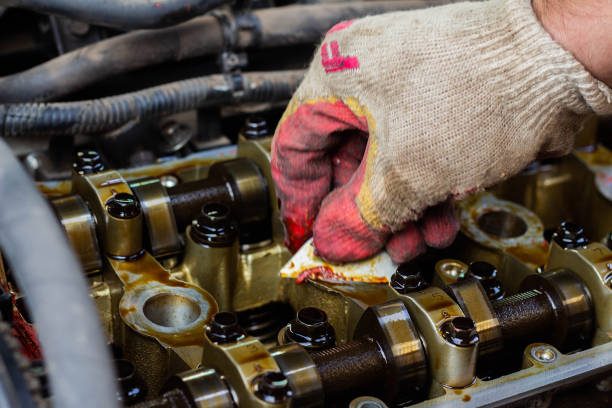
In the realm of automotive repair, few phrases strike as much fear into the hearts of car owners and mechanics alike as “blown head gasket.” This critical component serves as the seal between the engine block and the cylinder head. When it fails, it can lead to a slew of problems, from overheating to engine damage. In this article, we’ll provide a comprehensive guide to understanding, diagnosing, and fixing a blown head gasket.
Understanding the Role of the Head Gasket
Before diving into how to fix a blown head gasket, let’s explore what the head gasket does and why it’s so vital.
What is a Head Gasket?
The head gasket is a seal that fits between the engine block and the cylinder head in an internal combustion engine. It seals the combustion chambers, coolant passages, and oil passages, ensuring the separation of these critical areas.
What Happens When a Head Gasket Blows?
When a head gasket blows or fails, it loses its ability to maintain the seal between the engine block and cylinder head. This failure can lead to leakage of coolant into the oil passages, combustion gases into coolant passages, or oil into the combustion chambers. It can also allow coolant and oil to mix, leading to engine overheating and potentially severe engine damage.
Recognizing a Blown Head Gasket
Detecting a blown head gasket early is crucial to minimizing damage to your engine. Here are some signs that your head gasket may have blown:
Overheating Engine
Overheating is often the first sign of a blown head gasket. If coolant leaks into the cylinders or oil, or if combustion gases find their way into the coolant system, it can lead to engine overheating.
White Smoke from Exhaust
White smoke from the exhaust pipe can indicate coolant leaking into the combustion chambers, where it’s turned into steam and expelled.
Milky Oil
If you notice a milky discoloration in your oil, it’s a sign that coolant has leaked into the oil system.
Coolant Leaks
Visible coolant leaks on the exterior of the engine or underneath the vehicle could be due to a blown head gasket.
Repairing a Blown Head Gasket

Repairing a blown head gasket is a complicated process that requires mechanical expertise and time. Here’s a broad outline of what the repair process involves.
Confirm the Diagnosis
First, confirm that a blown head gasket is indeed the problem. This confirmation can involve a compression test, a leak-down test, or testing for combustion gases in the coolant.
Disassemble the Engine
Next, you’ll need to disassemble part of the engine to access the head gasket. This process involves removing various components like the exhaust manifold, intake manifold, valve train components, and finally, the cylinder head itself.
Replace the Head Gasket
With the cylinder head removed, you can replace the blown head gasket. It’s critical to clean the engine block and cylinder head surfaces thoroughly before installing the new head gasket to ensure a good seal.
Reassemble the Engine
After replacing the head gasket, reassemble the engine in the reverse order that you disassembled it. You’ll likely need to replace other components like head bolts, intake and exhaust manifold gaskets, and possibly more depending on your specific engine.
Can a Blown Head Gasket be Prevented?
While you can’t prevent a head gasket from ever blowing, certain practices can reduce the risk.
Maintain Your Cooling System
Regularly check and replace your coolant as recommended by your vehicle manufacturer. A well-maintained cooling system helps prevent engine overheating, a common cause of head gasket failure.
Regular Oil Changes
Regular oil changes help keep your engine clean and well-lubricated, reducing the risk of engine overheating and subsequent head gasket failure.
Avoid Overheating
Watch for signs of overheating, and if your engine does overheat, stop driving as soon as it’s safe to do so. Continued driving with an overheated engine increases the chance of blowing a head gasket.
Conclusion
A blown head gasket is a serious engine problem that can lead to costly repairs if not addressed promptly. Regular vehicle maintenance and vigilance are your best defenses against this issue. If you do find yourself with a blown head gasket, remember that it’s a complex repair best left to experienced mechanics. With their help, you can get back on the road and keep your engine running smoothly.








